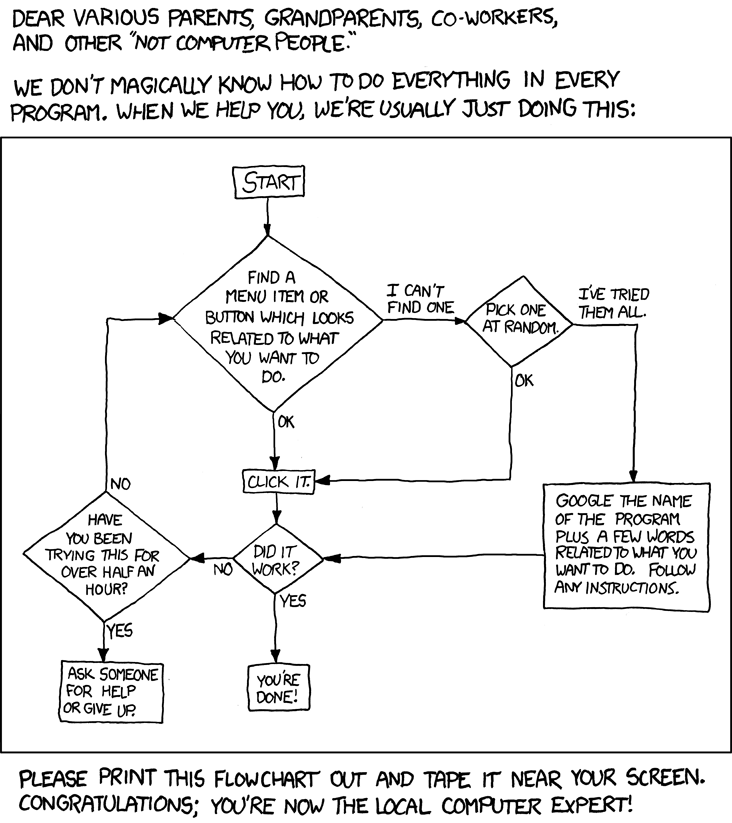For a while now I have been questioning the curriculum that is seen in many primary school I.T/ICT/Technology/Computer classes. Many primary school students spend an hour each week in a computer lab learning about Office programs and the like….”how to make a PowerPoint, Word Document, Photo Story etc”.
Now that we have left the “noughties”, these sorts of skills will no longer get students very far.
I believe that students should be taught basic skills in an authentic way and the list of skills that students need to know has changed dramatically in recent times. In 2008, I was involved in creating a Scope and Sequence (list of skills) for my school’s technology curriculum. I now cringe to think of some of the stand alone “skills” I listed in this document just 18 months ago!
Granted, there are many technology teachers who are now moving beyond these “stand alone, software based” skills into the world of Web 2.0, collaboration and multimedia which is fantastic. I also believe that teaching students about technology is not the sole responsibility of the technology teacher and technology integration in the general classroom is essential.
Today I came across a fantastic blog post by Kim Cofino which basically put all these thoughts I had been brewing into words! Check it out here….
Kim suggested a list of skills that emphasise “bigger, more wider-reaching concepts like collaboration across distances, communicating ideas to multiple audiences, or creating something new using technology tools”
Some of the skills that Kim suggested included:
- knowing to hold your mouse over an icon or a link to see what it does.
- understanding that the menus for any program are at the top of the screen, that they are usually very similar, and generally what you find within them (for example: “view” usually means how you see things on the screen and that menu is found in almost every program).
- recognizing when something is lit up (or underlined) on a website, you can click on it.
- knowing that the cursor changes when held over different parts of the screen and what that means (the little arrow turning into a hand over a weblink for example, or being able to stretch out a picture when it turns into the double-sided arrow).
- using tab to move from cell to cell or box to box on forms or websites.
- being able to recognize drop-down menus – and that they hold additional features.
- understanding that right clicking on things brings up more options.
These skills are transferable across almost all computer programs and operating systems. Many of her readers also added to this list with excellent suggestions.
Reading Kim’s post has really made me think about how I’ll approach teaching my Grade Two students in 2010 as well as how I will approach my coaching of fellow staff members. As she says, it is important to make the implicit, explicit.
I also loved this cartoon that Kim included in her post! It perfectly captures the way I’ve (unsuccessfully) tried to explain to many people that I’m not an expert but just have a few strategies that I try when I’m trying to figure something out!


Thanks for the excellent post Kathleen! It really captures a lot of the things I have been thinking about in regards to teaching technology. Just as we want students to be critical readers who can apply different strategies to understand a variety of texts, we should also provide them with strategies that allow them to use a wide range of web resources, not just one or two programs. (And the same is true for us teachers, using strategies to problem solve – the cartoon is very accurate!)
Thanks again to you and Kim, I’ll be sharing this with some of my colleagues.
-Jonah
Thanks Jonah – I’m glad you enjoyed it. As I said it was so good to read Kim’s post because it really captured my thoughts as well!
Hope you had a great Christmas/New Year and you’re well rested for another term at school! We’re not back to the 27th and I’m off on an Asian holiday tomorrow.
Look forward to seeing what your class is up to when I return!
Kathleen
So glad that post was helpful for you! Thanks so much for sharing some of my thoughts with your readers! Looking forward to seeing how you implement these ideas in the new decade 🙂
So true! We can’t teach these skills in isolation. Students need authentic practice, they need to know how to do all those things that come naturally to us “geeks”. We need to teach process and give them opportunities to practice the process while they are learning. It should always be authentic. I remember having the argument with the tech department a few years ago about teaching the kids Office. While I didn’t have anything against Office, it is very expensive and was keeping us from doing other things. I tried to convince them that we could teach them the same skills in any word processing/presentation/spreadsheet program. Our goal is to teach students transfer of knowledge. If they understand the basics, they should be able to transfer what they know to any new program that comes along.
Totally agree Kelly – how great it is to share these thoughts with like minded people!
Learning technology is like learning any language or even like learning to read. People have to re-wire their brains. The list you reference in your post is like teaching phonics and from there, the sky is the limit!
I’d love to see a post on explicit ethics in technology. I know most edtech programs start with this.
What a great analogy – thanks for sharing! I also might work on a post on explicit ethics – a great starting point! Thanks.
Melissa Edwards has written a great post about a similar topic here. http://mwedwardstechnology.blogspot.com/2010/01/skills-and-tools.html
Check it out!